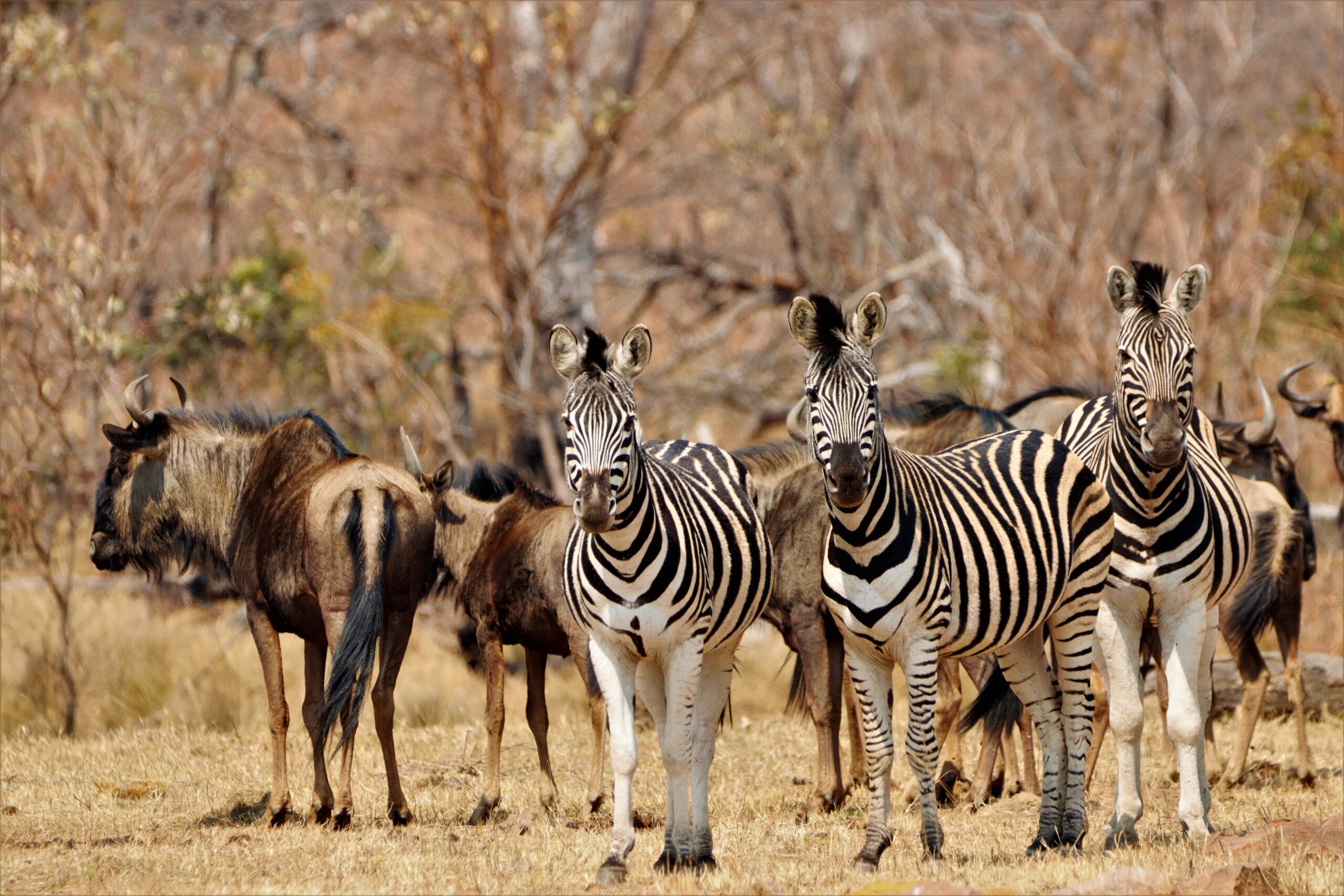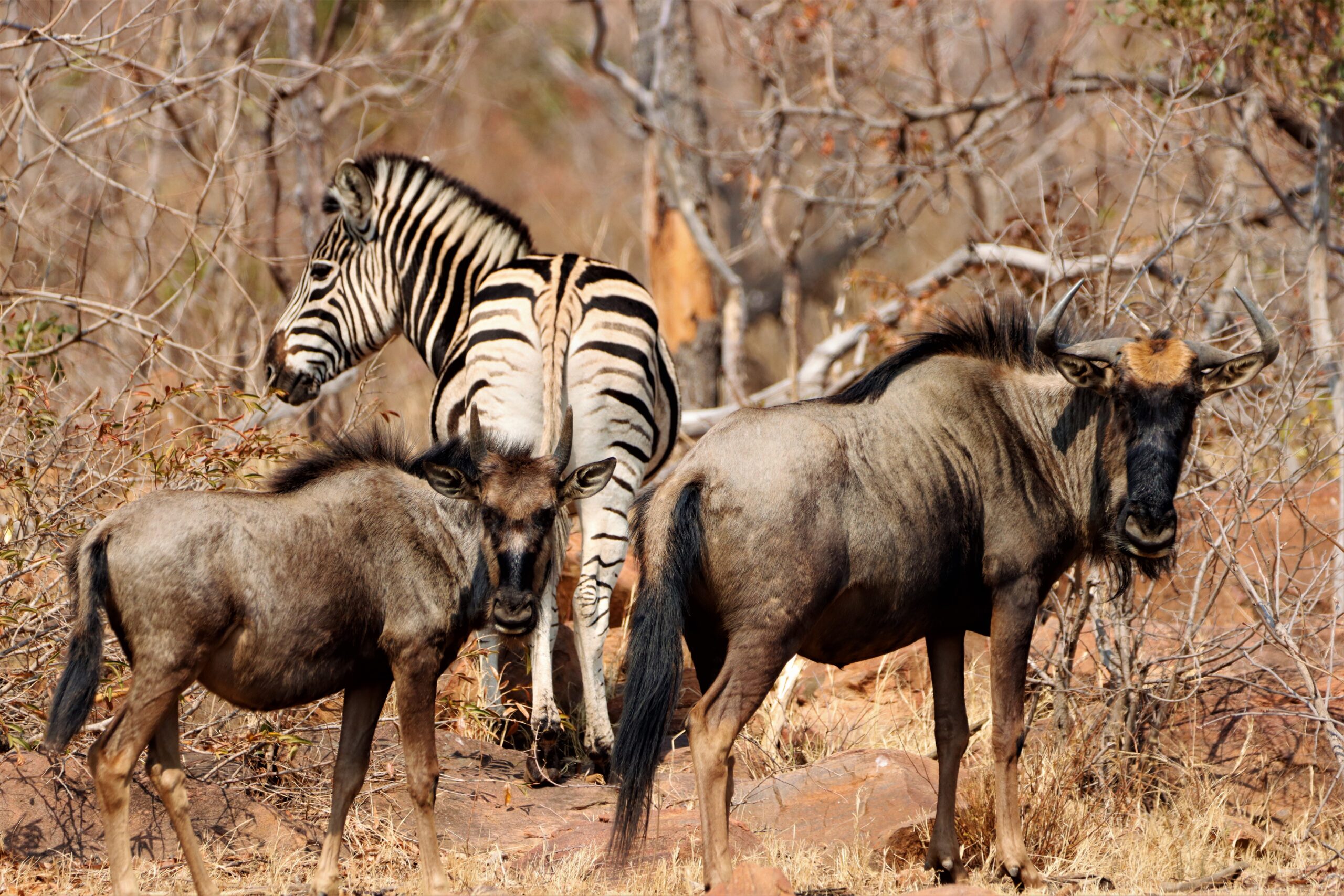Just Ask Us! We often see Wildebeest and Zebra together, and there are many more Zebra on the Reserve, why?
Josphat Responds.
When it comes to wildlife survival is of utmost importance. If animals are ‘together’ it means many senses are put to use to protect themselves.
Zebras have got good eyesight whilst wildebeest have a good sense of hearing, coupled with eyesight. Both species are grazers and prefer open plains.

Feeding together is beneficial for heightened awareness and at the same time, competition for food is not necessarily an issue. Zebras prefer taller grasses and the taller parts of grasses. They graze indiscriminately and their preferences are numerous. Wildebeest prefer short grass, with more green, soft growing parts. This is beneficial in that feeding behind zebra who crop the taller grasses, thereby make more options for wildebeest to select, who have a slightly more restricted palate.
Zebras defend themselves by kicking and biting whilst wildebeest use their horns and agility.
We find a lot of zebras on the reserve because of the dominant type of vegetation; Sourveld, which is favoured by animals such as Zebra who are hindgut fermenters, lacking a suitable rumen to digest the grass they feed on. Increasing their numbers in these areas is beneficial to the grazing quality on the Reserve and the pressure they exert on the grasses, improves the quality of grazing for most other grazers including Wildebeest and White Rhino.
Zebras are very successful because they stay together which helps to work as a team for detecting predators.

Photographs – Neil Davison

